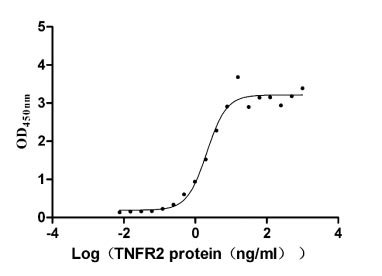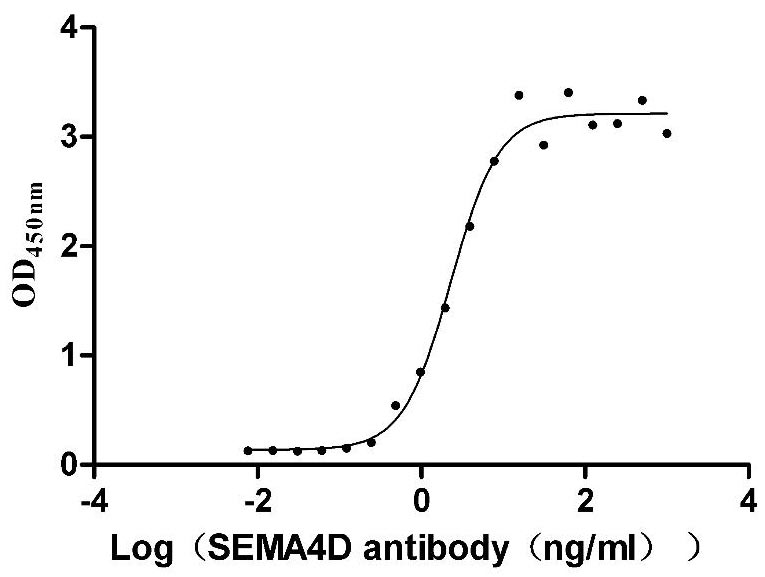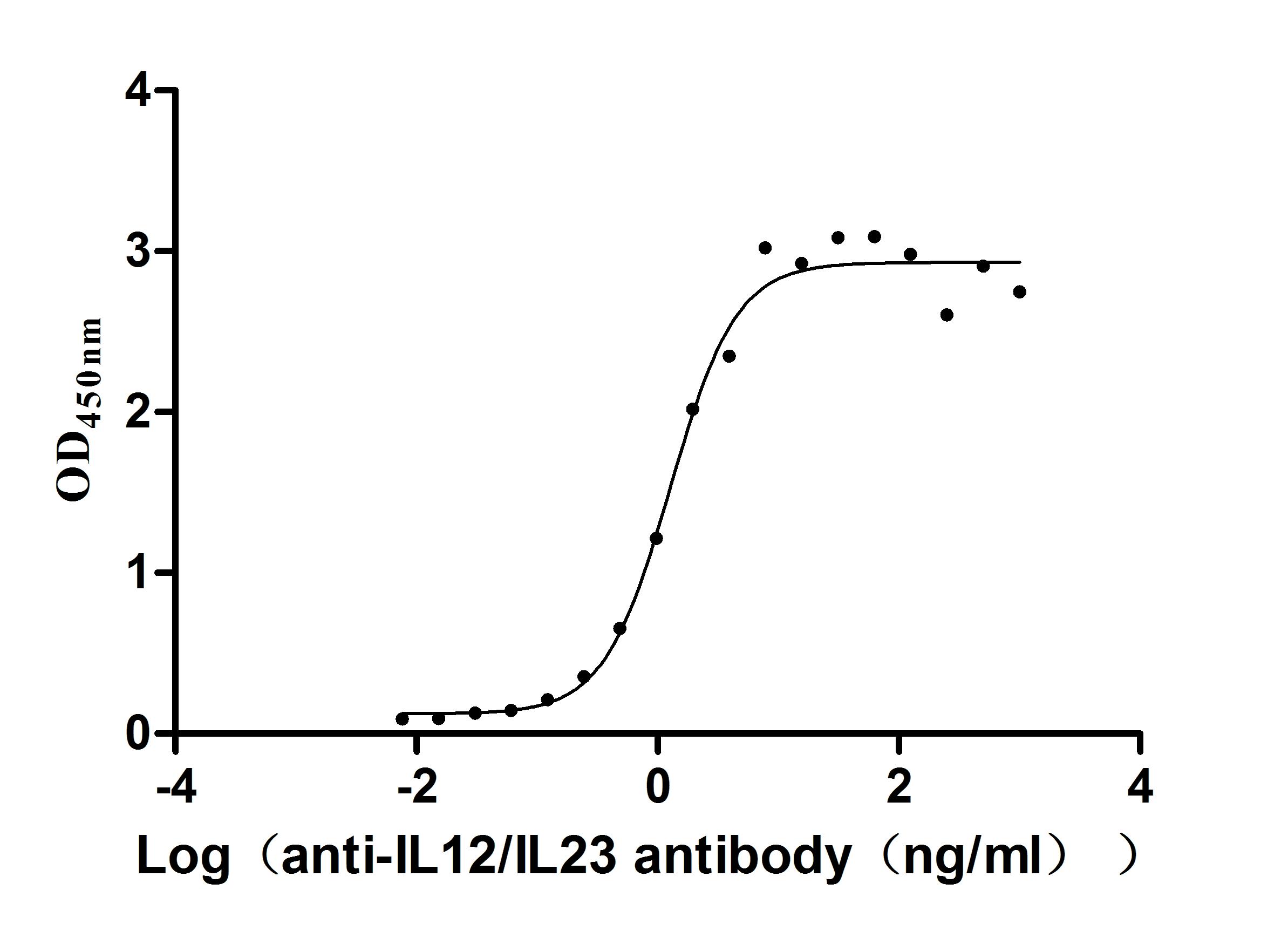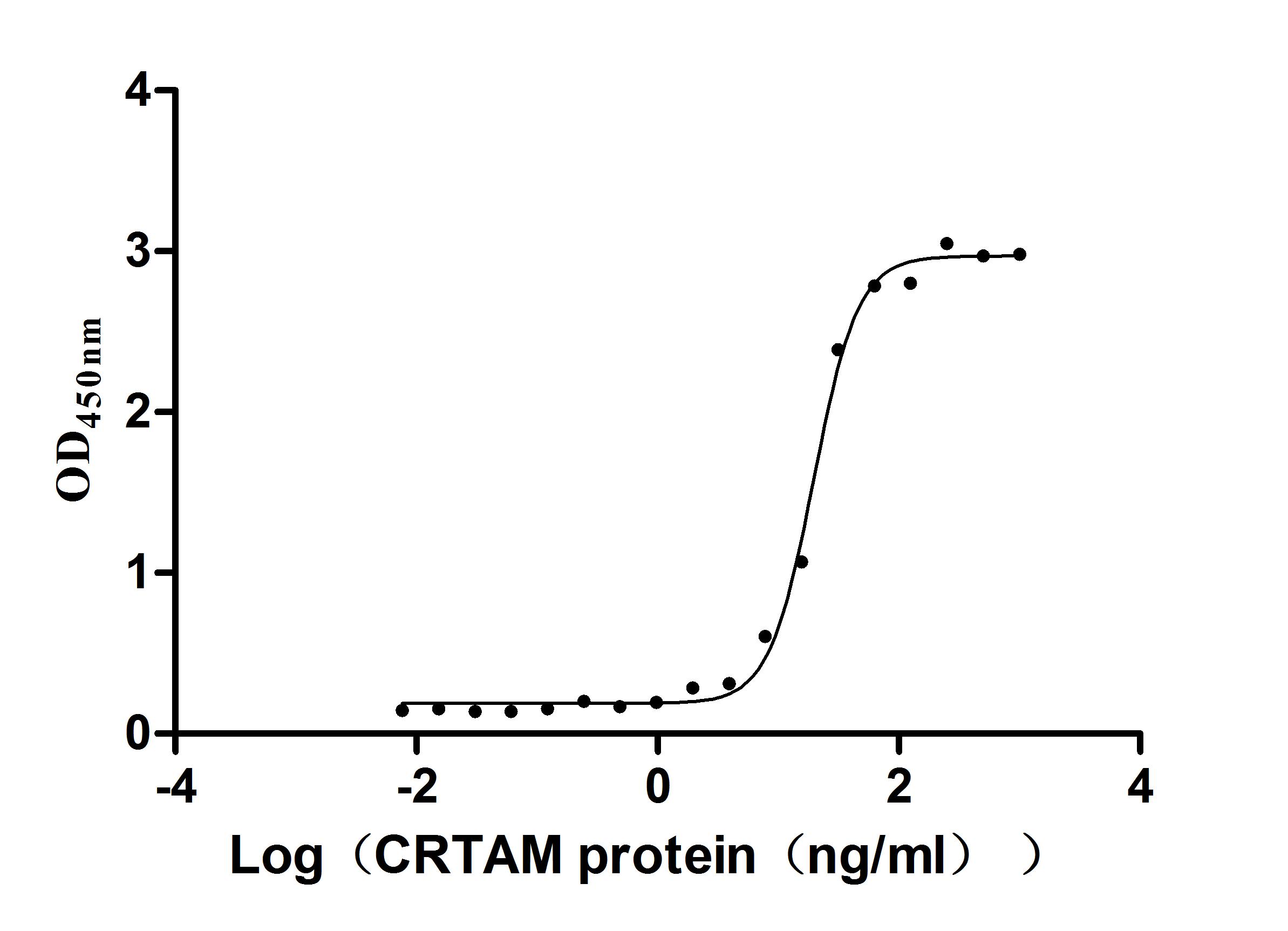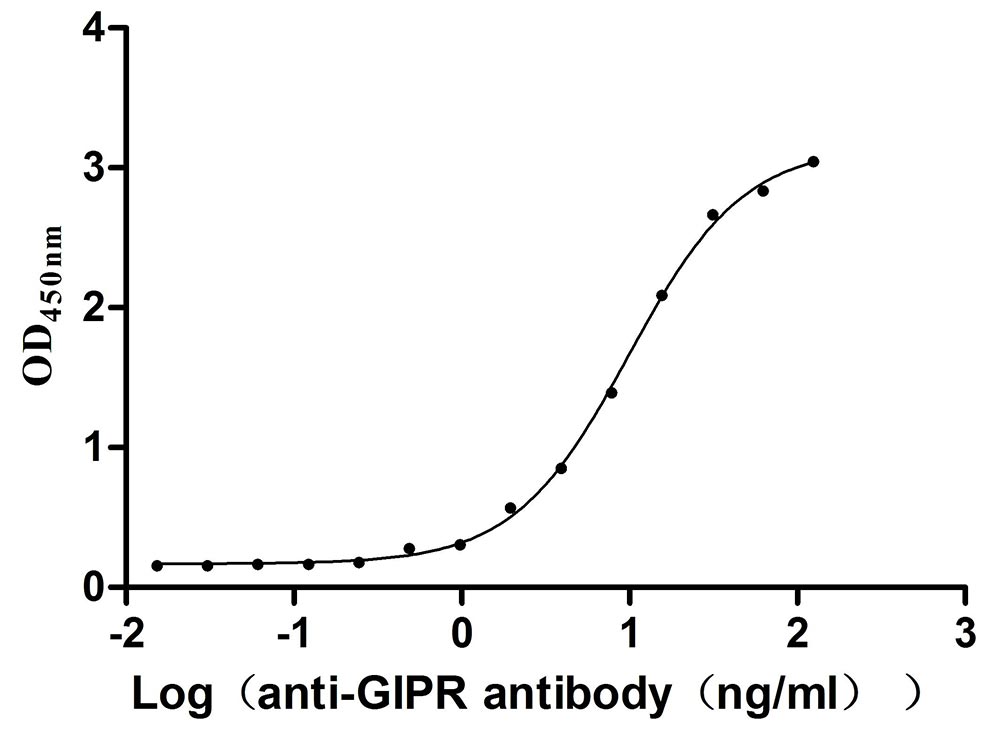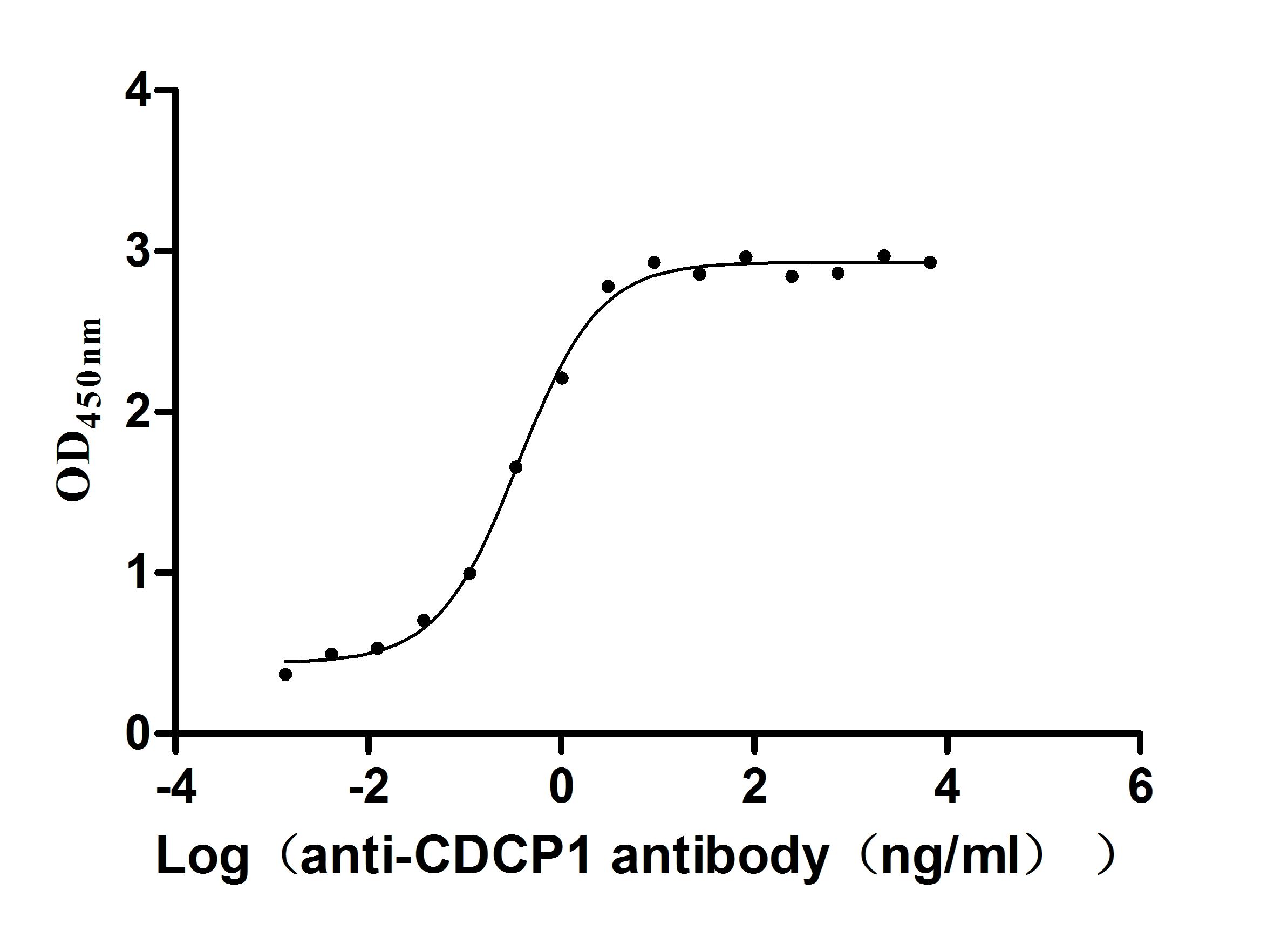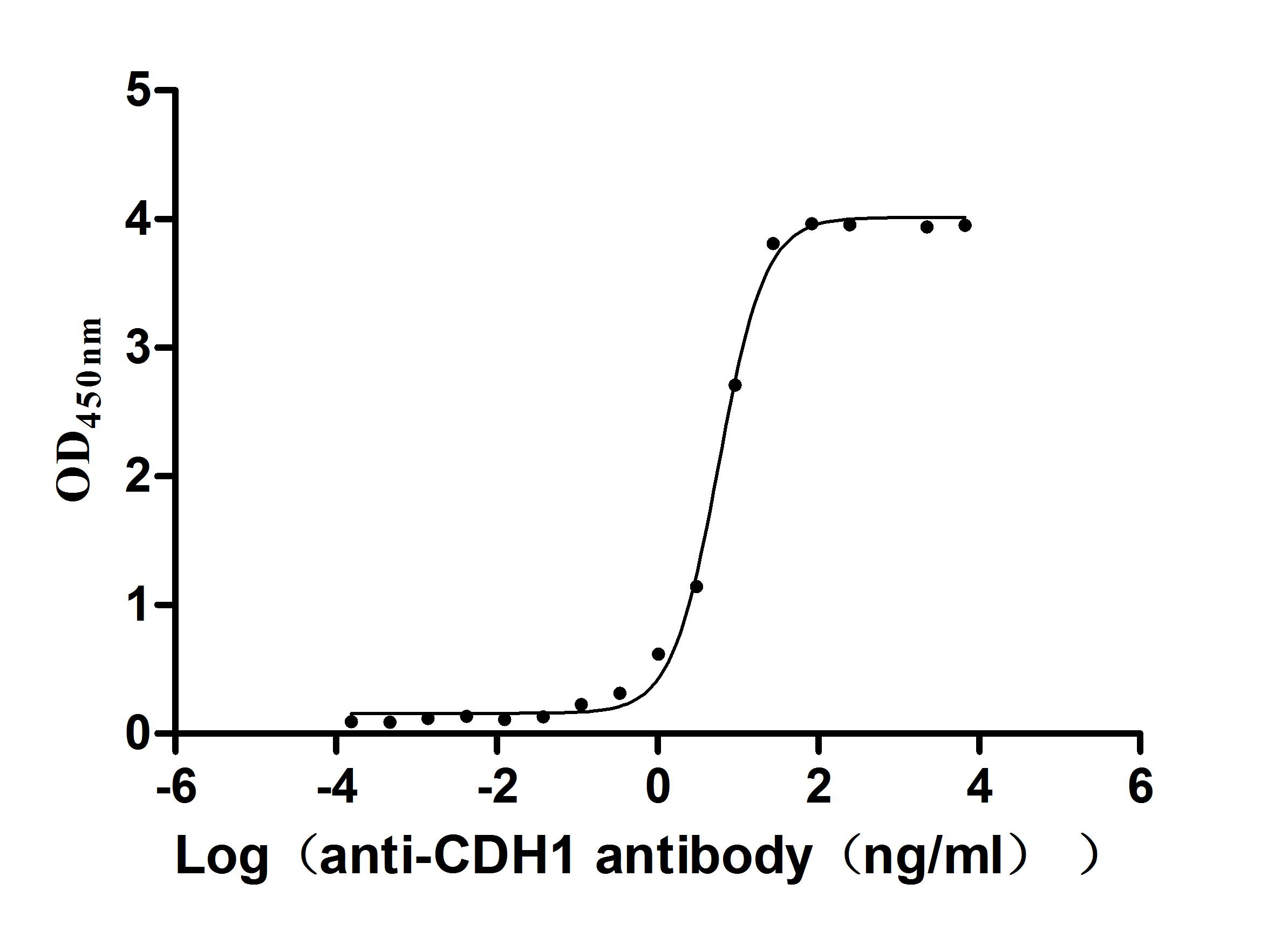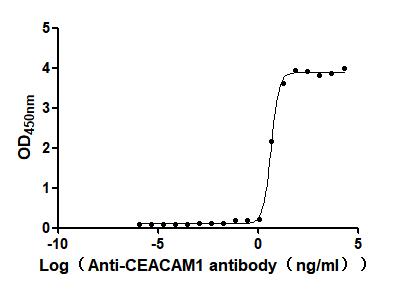Recombinant Human G-protein coupled receptor 143 (GPR143), partial
-
中文名稱:人GPR143重組蛋白
-
貨號:CSB-EP009758HU1-B
-
說明書:
-
規格:
-
來源:E.coli
-
共軛:Avi-tag Biotinylated
E. coli biotin ligase (BirA) is highly specific in covalently attaching biotin to the 15 amino acid AviTag peptide. This recombinant protein was biotinylated in vivo by AviTag-BirA technology, which method is BriA catalyzes amide linkage between the biotin and the specific lysine of the AviTag.
-
其他:
產品詳情
-
純度:>85% (SDS-PAGE)
-
基因名:GPR143
-
Uniprot No.:
-
別名:GPR143; OA1; G-protein coupled receptor 143; Ocular albinism type 1 protein
-
種屬:Homo sapiens (Human)
-
蛋白長度:Partial
-
蛋白標簽:Tag?type?will?be?determined?during?the?manufacturing?process.
The tag type will be determined during production process. If you have specified tag type, please tell us and we will develop the specified tag preferentially. -
產品提供形式:Lyophilized powder
Note: We will preferentially ship the format that we have in stock, however, if you have any special requirement for the format, please remark your requirement when placing the order, we will prepare according to your demand. -
復溶:We recommend that this vial be briefly centrifuged prior to opening to bring the contents to the bottom. Please reconstitute protein in deionized sterile water to a concentration of 0.1-1.0 mg/mL.We recommend to add 5-50% of glycerol (final concentration) and aliquot for long-term storage at -20℃/-80℃. Our default final concentration of glycerol is 50%. Customers could use it as reference.
-
儲存條件:Store at -20°C/-80°C upon receipt, aliquoting is necessary for mutiple use. Avoid repeated freeze-thaw cycles.
-
保質期:The shelf life is related to many factors, storage state, buffer ingredients, storage temperature and the stability of the protein itself.
Generally, the shelf life of liquid form is 6 months at -20°C/-80°C. The shelf life of lyophilized form is 12 months at -20°C/-80°C. -
貨期:Delivery time may differ from different purchasing way or location, please kindly consult your local distributors for specific delivery time.Note: All of our proteins are default shipped with normal blue ice packs, if you request to ship with dry ice, please communicate with us in advance and extra fees will be charged.
-
注意事項:Repeated freezing and thawing is not recommended. Store working aliquots at 4°C for up to one week.
-
Datasheet :Please contact us to get it.
相關產品
靶點詳情
-
功能:Receptor for tyrosine, L-DOPA and dopamine. After binding to L-DOPA, stimulates Ca(2+) influx into the cytoplasm, increases secretion of the neurotrophic factor SERPINF1 and relocalizes beta arrestin at the plasma membrane; this ligand-dependent signaling occurs through a G(q)-mediated pathway in melanocytic cells. Its activity is mediated by G proteins which activate the phosphoinositide signaling pathway. Plays also a role as an intracellular G protein-coupled receptor involved in melanosome biogenesis, organization and transport.
-
基因功能參考文獻:
- Three novel mutations, c.333_360+14del42insCTT, c.276G>A (p.W92X), and c.793C>T (p.R265X), were identified in GPR143 by PCR followed by Sanger sequencing in members of families with X-linked ocular albinism. PMID: 28211458
- The findings of the present study expanded the gene mutation spectrum of GPR143 and investigated the clinical phenotype of patients with OA1 in the Chinese population. PMID: 28339057
- c.758T>A mutation in exon 6 of the GPR143 gene is associated with X-linked ocular albinism. PMID: 28397224
- Our results expand the spectrum of GPR143 mutations causing CN and further confirm the role of GPR143 in the pathogenesis of CN. PMID: 27958203
- tyrosinase as a potential GPR143 binding protein opens new avenues for investigating the mechanisms that regulate pigmentation and neurogenesis. PMID: 27720922
- X-linked ocular albinism type I, characterized by developmental eye defects, results from GPR143 mutations PMID: 28632878
- This family was found to harbor a novel, likely pathogenic mutation in GPR143 resulting in a combined Stargart disease and heterozygous carrier phenotype in the affected sisters . PMID: 27367509
- Here, we report a Chinese trio-family with the son who was affected by the X-linked ocular albinism in which a novel missense mutation in the GPR143 was observed. PMID: 26547501
- Twenty Chinese patients, including 15 sporadic IN cases and 5 from X-linked IN families, were recruited and underwent molecular genetic analysis. We first performed PCR-based DNA sequencing of the entire coding region and the splice junctions of the FRMD7 and GPR143 genes in participants. PMID: 27036142
- Downstream signaling from GPR143 controls RPE secretion of pigment epithelium-derived factor (PEDF), a potent neurotrophic and antiangiogenic factor. PMID: 26741053
- Five mutations in GPR143 gene were detected in each of the five families, including a novel nonsense mutation of c.333G>A,two novel splicing mutations of c.360+1G>C and c.659-1G>A, a novel small deletion mutation of c.43_50dupGACGCAGC. PMID: 26160353
- intronic mutation that creates a cryptic splice-donor site in GPR143 of patients with ocular albinism PMID: 26061757
- The GPR143 gene analysis identified an identical point mutation in two Ocular albinism 1 patients and their mothers . PMID: 24526317
- Melanosome-autonomous regulation of size and number: the OA1 receptor sustains PMEL expression. PMID: 24650003
- OA1 is involved in melanoma cell migration and that OA1induced melanoma cell migration is mediated through the RAS/RAF/MEK/ERK signaling pathway. PMID: 24736838
- a novel splicing site mutation of the GPR143 gene was found in a Han Chinese congenital ocular albinism pedigree. PMID: 24301936
- Data report that p.Y269X mutation of GPR143 gene is responsible for the pathogenesis of familial ocular albinism. PMID: 22916221
- Four patients with X-linked ocular albinism type 1 were identified from a cohort of 15 boys with clinical signs of albinism using mutation detection methods. PMID: 22486324
- These results identify the Oa1 transducer Galphai3 as the first downstream component in the Oa1 signaling pathway. PMID: 21931697
- The ocular albinism type 1 (OA1) GPCR is ubiquitinated and its traffic requires endosomal sorting complex responsible for transport (ESCRT) function. PMID: 21730137
- TYR gene mutations have a more severe effect on pigmentation than mutations in OCA2 and the GPR143 gene. Nevertheless, mutations in these genes affect the development of visual function either directly or by interaction with other genes like MC1R. PMID: 21541274
- A novel causative mutation of GPR143 was identified in a five-generation Chinese family with X-linked ocular albinism. PMID: 21423867
- TYR gene mutations represent a relevant cause of oculocutaneous albinism in Italy, whereas mutations in P present a lower frequency. Clinical analysis revealed that the severity of the ocular manifestations depends on the degree of retinal pigmentation. PMID: 20861488
- This is the first report of a Japanese X-linked ocular albinism (XLOA) patient with a GPR143 mutation. PMID: 21348135
- L-DOPA activates GPR143 signaling through a Gq pathway, while dopamine inhibits the receptor. PMID: 18828673
- we describe the first Spanish family known to present with X linked ocular albinism due to mutations in the OA1 gene PMID: 20649618
- OA1 interacts with MART-1 at early stages of melanogenesis to control melanosome identity and composition. PMID: 19717472
- Review: mutational analysis in ocular albinism type 1 PMID: 11793467
- OA1 has been immunologically characterized as an antigen that is expressed, processed, and presented in an MHC-restricted fashion by melanoma cells, but for which there is the human equivalent of a "knockout"--i.e., complete deletion in a male patient. PMID: 12538723
- Mutations in the OA1 gene is associated with ocular albinism PMID: 12868035
- Mutational analysis of the OA1 ocular albinism gene. PMID: 16646960
- No correlation was identified between congenital nystagmus and ocular albinism 1(OA1) gene. PMID: 16754205
- Our results indicate that a mutation in the GPR143 gene can cause a variant form of ocular albinism, with congenital nystagmus as the most prominent and only consistent finding in all patients in this Chinese family. PMID: 17516023
- eight new mutations located in the coding region of the gene are identified. PMID: 17822861
- Two novel mutations in OA1 gene were identified in two families with ocular albinism. Identified mutations are likely loss-of-function mutations. Mutations in OA1 gene are associated with majority of X-linked ocular albinism cases. PMID: 17960122
- These results indicate that this novel GPR143 mutation is associated with the congenital nystagmus observed in this Chinese family. PMID: 18523664
- Panretinal function in OA1 is within normal limits at all ages, consistent with previous reports in generalized albinism. PMID: 18798082
- Results illustrate an autocrine loop between OA1 and tyrosinase linked through L-DOPA, and this loop includes the secretion of at least one very potent retinal neurotrophic factor. PMID: 18828673
- These results expand the mutation spectrum of GPR143, and demonstrate the clinical characteristics of OA1 among the Chinese. PMID: 18978956
- The novel mutation p.G315X in the OA1 gene was identified in a Chinese family with ocular albinism, which is predicted to generate a premature stop codon. PMID: 19123159
- Results suggest that this novel mutation in GPR143 is associated with the congenital nystagmus observed in this Chinese family. PMID: 19390656
- Our results confirm that GPR143 is the major locus for X_linked ocular albinism and that exon 2 is a region of high susceptibility to deletions. PMID: 19604113
- A Chinese family with X-linked ocular albinism and partial deletion of GPR143, is reported. PMID: 19610097
顯示更多
收起更多
-
相關疾病:Albinism ocular 1 (OA1); Nystagmus congenital X-linked 6 (NYS6)
-
亞細胞定位:Melanosome membrane; Multi-pass membrane protein. Lysosome membrane; Multi-pass membrane protein. Apical cell membrane; Multi-pass membrane protein.
-
蛋白家族:G-protein coupled receptor OA family
-
組織特異性:Expressed at high levels in the retina, including the retinal pigment epithelium (RPE), and in melanocytes. Weak expression is observed in brain and adrenal gland.
-
數據庫鏈接:
Most popular with customers
-
Recombinant Human Lymphotoxin-alpha (LTA) (Active)
Express system: Mammalian cell
Species: Homo sapiens (Human)
-
Recombinant Macaca mulatta Semaphorin-4D isoform 1 (SEMA4D), partial (Active)
Express system: Mammalian cell
Species: Macaca mulatta (Rhesus macaque)
-
Recombinant Human IL12B&IL12A Heterodimer Protein (Active)
Express system: Mammalian cell
Species: Homo sapiens (Human)
-
Recombinant Human Cell adhesion molecule 1 (CADM1), partial (Active)
Express system: Mammalian cell
Species: Homo sapiens (Human)
-
Recombinant Mouse Gastric inhibitory polypeptide receptor (Gipr), partial (Active)
Express system: Mammalian cell
Species: Mus musculus (Mouse)
-
Recombinant Human CUB domain-containing protein 1 (CDCP1), partial (Active)
Express system: Mammalian cell
Species: Homo sapiens (Human)
-
Recombinant Human Cadherin-1(CDH1),partial (Active)
Express system: Mammalian cell
Species: Homo sapiens (Human)
-
Express system: Mammalian cell
Species: Homo sapiens (Human)


